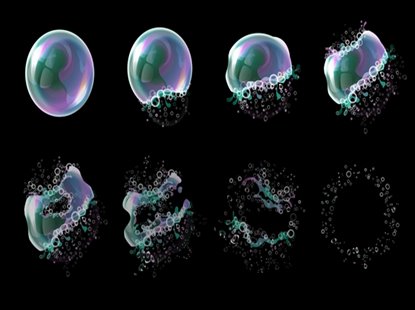Defoamers and Their Impact on Reducing Foam in Liquid Systems
Defoamers and Their Impact on Reducing Foam in Liquid Systems
Blog Article
How Defoamers Improve Efficiency in Production and Production

Understanding Defoamers
Defoamers play a critical role in different making processes by efficiently combating the development of foam, which can influence and disrupt operations item top quality. Foam can arise in many contexts, such as throughout blending, heating, or chain reactions, potentially bring about inefficiencies and disparities in items. The device through which defoamers operate usually entails reducing the surface stress of the fluid, permitting bubbles to integrate and rise to the surface a lot more conveniently, where they can then rupture.
Efficient defoamers not just lessen foam formation yet likewise maintain compatibility with the item, guaranteeing that there are no adverse results on the last output. Recognizing the buildings and features of defoamers is necessary for producers aiming to optimize their processes, boost efficiency, and maintain the stability of their items (defoamers).
Key Advantages of Defoamers
Utilizing defoamers in producing processes provides a range of considerable advantages that enhance functional efficiency and product top quality. One of the main advantages is the reduction of foam development during production, which can block equipment and interrupt process. By minimizing foam, defoamers make sure smoother procedures, resulting in lowered downtime and upkeep costs.
Furthermore, defoamers boost product consistency by protecting against air entrapment, which can compromise the stability of the last item. This is particularly essential in sectors where aesthetic appearance and texture are important, such as in paints, coatings, and food. Improved item quality not only satisfies consumer assumptions but likewise enhances brand name reputation.
Furthermore, defoamers can help in enhancing resource use. By boosting the performance of resources usage, they add to cost savings and minimized waste, lining up with sustainability objectives. The application of defoamers can lead to shorter processing times, enabling producers to enhance production capacity without considerable capital investment.
Applications in Various Industries
In producing processes across different industries, the application of defoamers plays a vital function in improving efficiency and product top quality. These chemical ingredients are used in industries such as food and beverage, drugs, and fabrics to mitigate foam-related difficulties.
In the food and beverage industry, defoamers are important during the fermentation procedure, preventing frothing that can disrupt manufacturing and ruin the item's integrity. Likewise, in the pharmaceutical industry, Visit Your URL defoamers are made use of in the formula of liquid medications, ensuring uniformity and security while reducing waste.
Fabric manufacturing additionally benefits from defoamers, as they are used in coloring and finishing procedures to promote also circulation of dyes check these guys out and chemicals. This application not just enhances the last product's look but additionally decreases the quantity of water and energy taken in throughout production.
In addition, in the paper and pulp market, defoamers aid maintain process performance by decreasing foam that can prevent machinery performance. On the whole, the diverse applications of defoamers across these sectors underscore their value in maximizing manufacturing procedures and delivering high-grade products.

Choosing the Right Defoamer
Selecting a suitable defoamer is crucial for making best use of performance and top quality in making procedures. The selection of defoamer relies on numerous aspects, consisting of the certain application, the kind of foam being produced, and the formula of the product Get More Information being manufactured.

To start with, think about the chemical compatibility of the defoamer with other ingredients in your solution. A defoamer that connects adversely with other components can detrimentally impact product quality. In addition, the temperature level and pH range throughout handling are important; some defoamers perform ideally under particular conditions while coming to be inadequate in others.
Secondly, evaluate the defoamer's efficiency qualities, such as its ability to swiftly decrease foam and its perseverance throughout manufacturing. It is important to pick an item that not just removes foam quickly yet likewise preserves its efficiency with time.
Finally, take into consideration ecological and regulative factors, especially if your production process undergoes strict conformity standards. Choosing a biodegradable or low-toxicity defoamer can aid satisfy sustainability objectives while guaranteeing functional efficiency. By thoughtfully analyzing these criteria, makers can make enlightened decisions that improve performance and product stability.
Ideal Practices for Implementation
Effective application of defoamers in producing processes needs cautious planning and adherence to best practices. Selecting the right defoamer, as previously talked about, is essential; ensure it is compatible with the materials involved and addresses the identified frothing concerns properly.
Following, preserve clear communication with all stakeholders, consisting of drivers and high quality control teams. Training sessions can aid make certain that every person recognizes the dosing procedures, potential influence on product quality, and safety factors to consider. Applying a test phase can also be beneficial; display efficiency closely to determine performance and make needed adjustments.
In addition, routine screening and surveillance of foam levels can supply valuable insights into the defoamer's performance in time. Adjusting does in reaction to adjustments in manufacturing variables will assist preserve optimal effectiveness - defoamers. Finally, recording all processes and results advertises continuous enhancement, permitting fine-tuning of defoamer usage and enhancing general performance in producing procedures.
Verdict
In summary, defoamers play a vital duty in boosting performance within production and manufacturing procedures. By decreasing foam development and facilitating bubble coalescence, defoamers contribute to boosted item top quality, uniformity, and functional performance.
The advantages prolong to item high quality and expense savings, as defoamers help improve processes.Defoamers play a crucial role in various manufacturing procedures by properly combating the development of foam, which can interrupt operations and affect item high quality. Understanding the buildings and functions of defoamers is essential for manufacturers intending to enhance their processes, boost performance, and preserve the integrity of their items.
Using defoamers in producing procedures uses a variety of significant advantages that improve operational performance and item top quality.Furthermore, defoamers enhance item uniformity by avoiding air entrapment, which can compromise the honesty of the final item.
Report this page